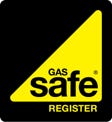
Mike the Boilerman
Your independent Gledhill ElectraMate repair specialist for Berkshire & surrounding areas
For more information or to book your Electramate repair, call or text me on 07866 766364

Mike the Boilerman
Your independent Gledhill ElectraMate repair specialist for Berkshire & surrounding areas
For more information or to book your Electramate repair, call or text me on 07866 766364
There are two versions of Electramate 2000, the 9kW and the 12 kW. The most common is the 9kW, usually fitted in modern apartments with up to two bedrooms. This page deals with the 9kW version.
These two appliances are identical in appearance but very different inside and they are not clearly identified with a badge. The easiest way is to look for a label on the casing like this, often near the top edge. The 9kW version label says “AEC2020” or “AEC2021” and the 12kW version says “AEC2040”. Note the difference in the numbers. (This photo is of the label on a 12kW). Confusingly I’ve also seen a 9kW with AEC2041 on the label.
As Electramates grow older it becomes clear that due to their complexity they suffer from multiple failures which I describe in detail here. The list is long, with many of the breakdowns being time-consuming and expensive to fix, so let’s dive straight in with the common faults:
1) Heating element failure:
The Electramate appears to be working correctly with all the right lights showing on the PCB, the pumps running etc, but is simply not hot because the heaters are not drawing electricity. The electric heating elements are contained inside a small copper cylinder called a “flow boiler”, which fails every few years and needs replacing. There are isolator valves to allow the flow boiler to be replaced without draining the appliance but these valves usually leak when operated, very worrying for the technician. If the leaks are ignored for an hour or two they usually reduce then completely stop, but this cannot be relied upon. If either of the leaking valves continues to leak then the unit will need to be drained down anyway and the leaking valve(s) replaced. This makes the time required to replace a failed flow boiler highly unpredictable.
2) Power relay (contactor) burned out:
There are two plug-in power relays which disconnect the power from the heater elements to control the temperature. The sockets these relays plug into are prone to overheating, scorching, melting and failing. Often the cables connected to them are burned too. This is reasonably straightforward to repair but it is prudent to switch to a different brand of relay with direct cable connections rather than the plug-in mounting.
3) Leaking CA device:
This is an ‘air admittance’ valve fitted to allow the automatic filling device to comply with water regulations. The auto-filling device keeps the Electramate and the heating system correctly filled with water, replacing water continuously lost through microscopic leaks When the CA device fails, it dribbles water out through the overflow pipe. The quick and dirty fix for this is to simply turn OFF the mains water isolator valve feeding the automated filling device with water. The dribbling stops, but the longer term consequence is the system is no longer having lost water replaced so the system eventually stops working. To get it working again the supply isolator valve needs turning ON again for a few minutes and the system refilled and vented, then turned back OFF to stop the overflow leak. Or replace the CA valve.
4) Overheating:
The unit appears completely dead, the PCB display goes out and no pumps will run, yet there is electricity present at the power input terminals. This happens when one or both of the two overheat protection thermostats trips. The thermostat trips when the unit genuinely overheats. The unit genuinely overheats when the power relay (contactor) jams in the ON condition when instructed by the PCB to turn OFF, leading to the power being disconnected by the back-up power relay operated by the overheat thermostat(s). Although the power relays appear to be in perfectly good condition, replacing them cures this fault.
5) PCB failure:
The control board fails in one of many different ways and fails to correctly control the appliance. It fails respond to the buttons being pressed, the display goes blank, or displays rubbish, or it sometimes just runs all the pumps all the time. A new (and very expensive) PCB fixes this.
6) Sensor failure.
There are three digital heat sensors in the Electramate 2000. Failure is common, leading to the hot water (and occasionally the heating too) not working, depending on which sensor has failed. The sensor status can be displayed on the PCB and an error message can identify a failed sensor, but in my experience this is not reliable. A sensor can fail and the PCB not tell you. Sometimes the only way to diagnose a failed sensor is to replace the suspect sensor and see if the unit begins to work correctly. If the hot tap water temperature cycles up and down then this sometimes indicates the DHW flow sensor has failed.
7) Scale contamination:
The hot water runs warm rather than properly hot, or more slowly than it used to, or cycles up and down between hot and cold. Calcium water scale is partially blocking the domestic hot water plate heat exchanger and it needs replacing. Chemical descaling is possible but tends not to remove all the scale so the fault returns more quickly than if the heat exchanger is replaced with new.
8) Failing/jammed/blocked blender valve:
The blender valve mixes very hot water drawn from the top of the store and cooler water from the bottom to feed the heat exchanger and radiator circuits. When it jams or fails a hard-to-diagnose reduction in hot water performance occurs, as the temperature of the heating water being fed to the plate het exchanger is not high enough. With a hot tap running slowly the water will be nice and hot, but at a higher flow rate, it becomes just warm rather than properly hot. Replacing the blender valve fixes this. The unit requires partial draining for this.
That’s about it for now. I’m sure I’ll think of more faults to list soon, this boiler suffers from plenty.
In the meantime if you’d like me to fix yours, call or text me on 07866 766364. I’m based in west Berkshire (near Hungerford) but willing to drive fairly long distances. I charge for time spent travelling though in addition to time spent on site so the further away you are, the more expensive a visit becomes. Trips taking more than an hour and a half each way tend to be uneconomical.
Copyright Michael Bryant 2023
Site first created 31st December 2006
Last updated 29th December 2022
Gas Safe Register 197499, CIPHE registration number 56207

